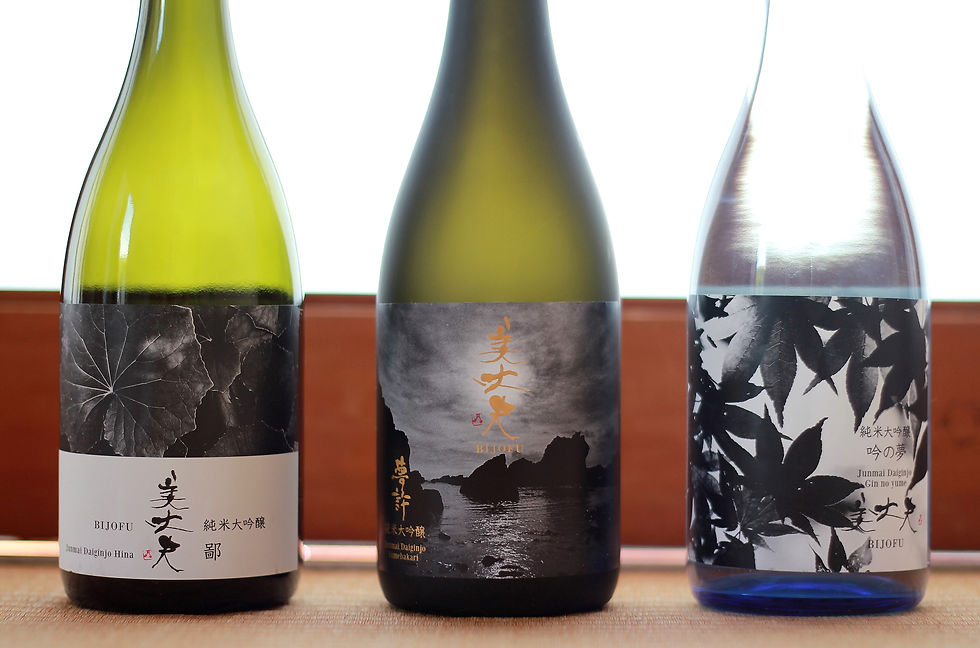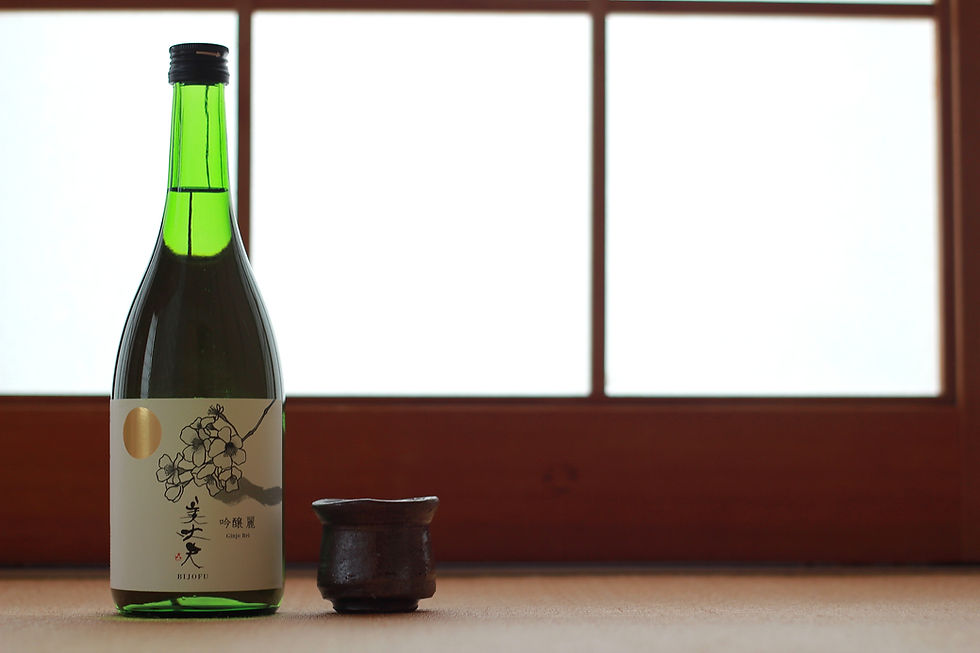Bijofu and The Handsome Man of Tosa
- Andrew Russell
- Aug 27, 2019
- 4 min read
Updated: Aug 28, 2019

Located on the southern coast of Shikoku, the smallest of Japan's four main islands, Kochi prefecture is blessed with an abundance of natural beauty. Although it is the largest of the four prefectures on the island, it is also the least populous, and boasts the highest ratio of forested land anywhere in Japan. With its comparatively heavy rainfall also creating several free-flowing rivers, it is little wonder that Kochi has a reputation as being one of the most beautiful prefectures in all of Japan. Moreover, regions such as this, so rich in natural resources, are also synonymous with sake brewing. Therefore, it should come as no surprise to hear that Kochi also has a thriving sake industry comprising of eighteen different breweries.
Indeed, famous sake brewing regions are often defined by their water supply, and in the district of Aki-Gun, a coastal area also famous for Yuzu and the mighty Yanase cedar tree, two rivers supply the local breweries and rice paddies with the copious amounts of high quality water necessary for brewing good sake. Flowing down from the nearby Senbonyama mountain, the ultra-soft (nansui/軟水) water of the Yasuda and Nahari rivers impart their particular characteristics on the region and determine the delicate style of sake that are so often the result of this type of water. Although nansui is often said to be extremely difficult to brew with, it is also known to produce sake of high quality that is easy drinking.

One brewery in particular that has mastered the art of brewing with nansui is Hamakawa Shoten, the most easterly located of all the Kochi breweries. The meaning of their signature brand name Bijofu has a strong connection with the local region, which up until the Meiji Restoration in 1867 was known as Tosa Province. Their most famous resident was the legendary Sakamoto Ryoma, a prominent figure prior to the restoration who was instrumental in uniting the previously hostile provinces of Choshu and Satsuma, modern day Yamaguchi and Kagoshima respectively, in order to rise up and overthrow the central Tokugawa shogunate. The name Bijofu, which means "Handsome and Gentle Man of Tosa", is said to be a reflection of his character with its refined and elegant style.
As mentioned previously, these particular characteristics are not easy to achieve in sake production as soft water can present several serious challenges to a team of brewers. So much so, that it was even considered at one point to be completely unsuitable for making quality sake. Problems such as weak enzyme activity in the all important koji, and as a result, poor fermentation from the main mash were the primary causes for concern. However, the makers of Bijofu have managed to overcome these weaknesses and instead now utilise them to their advantage. Furthermore, Bijofu now serves as one the premium examples of the style often referred to as female sake (Onna-zake 女酒) in Japanese, a class synonymous with ginjo brewing using soft water.

The man responsible for this task is their veteran master brewer Ohara Akira, who with over thirty years of experience making sake has managed to overcome his initial struggles and perfect the delicate techniques required for brewing under these conditions. Ohara-San was fortunate that his former mentor from his previous brewery was a Hiroshima master brewer, a region famous as the original pioneers of the ginjo style of sake, specifically by utilising the composition of this type of water. Therefore, he was able to seek advice on how overcome these obstacles by brewing at cooler temperatures and encouraging a longer period of fermentation. When done correctly, the resulting mash will often contain more pronounced yet soft flavours and aromas in the final sake. Evidence that Bijofu have mastered this slower and more refined method can be found in their run of eight consecutive Gold Medals that they received from the annual Nation Research Institute of Brewing Awards.
As for rice, the other crucial ingredient in sake brewing, Hamakawa Shoten have opted to source from various different regions across Japan as opposed to just local varieties. Currently, the main varieties used are Matsuyama-Mii and Shizuku-Hime, both natives of neighbouring Ehime prefecture, and a local variety called Gin no Yume. Not wanting to compromise on quality, for their most premium examples they also insist on using Yamada-Nishiki from Hyogo prefecture. These are combined with Kochi prefecture's own unique strains of brewing yeasts, in particular a type called AA41 that has a tendency to produce Isoamyl acetate, the source of the wonderful melon and banana aromas often present in ginjo sake.
Although they produce a wide variety of different styles using these raw ingredients, the overall character of Bijofu can be summarised as being low in amino acids, with refreshing aromas and a crisp dry finish. Although completely in the realms of subjectivity, if I had to recommend just one sake that best represents all of what is good about the Bijofu brand, then it would have to be Ginjo Rei (吟醸麗) made from the aforementioned Matsuyama-Mii. Aside from having perhaps one of the most beautiful sake labels I have ever seen, it also boasts a wonderfully pronounced aroma of melon followed by a light and refreshing fruity taste. A truly superb example of the ginjo classification in general, and one that definitely lives up to the reputation of that elegant man from Tosa.





Comments